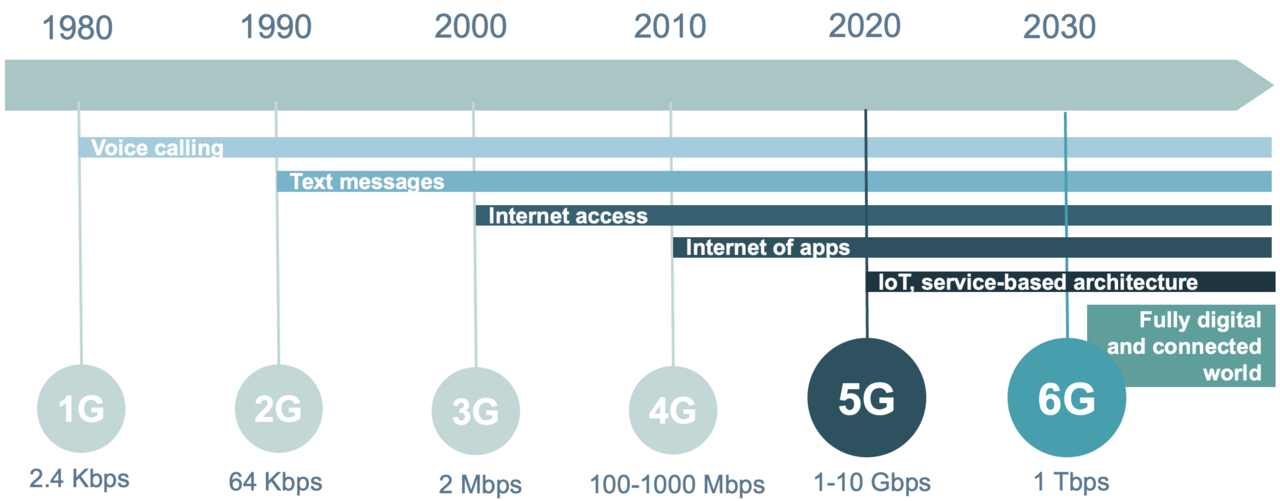
History of mobile network technologies (1G to 4G)
Unlike other communication technologies, cellular networks are organised by generations, making it easier to coordinate standardisation efforts around the world.
The first generation was far from being internationally standardised and consisted essentially of an analogue telephone system. This system first started to be deployed in the 1980s in cars, through devices similar to the landline phones of the time, and with 10 times the transmitting power of today's smartphones for reaching 100 km away antennas [1].
The second generation, or 2G, marked the advent of mass-market mobile telephony with GSM (Global System for Mobile Communications). The telephone became a portable device, used only for making calls. The throughput was limited by extracting the lowest and highest tones, thus increasing the number of simulated users. The antenna power was reduced, thus leading to an increase in the number of antennas to cover any territory where customers were likely to move. The difficulty at that time was also to switch antennas when moving (handover). In the GSM system, the mobile terminal automatically connects to the antenna with the strongest signal. 2G was improved over time, increasing the number of antennas, and offering the possibility to send data in addition to voice - but with a very limited throughput, about a million times lower than 5G. The intermediate generations were known as GPRS (General Packet Radio Services) and EDGE (Enhanced Data Rates for GSM Evolution), which are still present in 2021 in some areas with poor coverage.
3G came with a better throughput and more data usage, compared to the previous generation which was more focused on voice. This generation sees the birth of smart devices with applications that generate more and more data. It is also the first generation that comes with a unified vision and global standards. Like 2G, 3G experienced a number of versions: UMTS (Universal Mobile Telecommunication System, in Europe), HSPA (High Speed Packet Access) and HSPA+.
4G, via LTE (Long Term Evolution), uses a single communication channel, combining voice and data. The data rate also increases significantly, paving the way for a multitude of new connected applications. Since 4G, the main evolution has been 4G-Advanced, allowing for greater speed and reliability. As before with previous generation technologies, the number of antennas increased dramatically - thus creating additional deployment issues such as interferences (i.e., the superposition of two signals of the same frequency). However, even with these issues and the need to manage frequency distribution, designers have opted for smaller and smaller cells - with the aim of reducing transmission power while increasing throughput.
5G and 6G are covered on this webpage.
[1] Guy Pujolle, Faut-il avoir peur de la 5G ? (2020)

